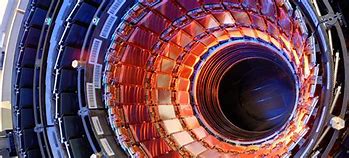Particle physicists move closer toward understanding the matter asymmetry in the universe
CMS collaboration recently reported the first measurement of the top-Higgs CP structure. Dr. XIAO MENG, PI in the Department of Physics, made significant contribution to the research effort and was selected as one of two editors for this article published in Physical Review Letters.
There is far more matter in the universe than antimatter, which seems a natural phenomenon for most people, however it has always troubled particle physicists. The Big Bang should produce the same amount of matter and antimatter, and now their abundance is so different. Existing theories cannot offer reasonable explanation. Theorists suggest that some interactions lead to asymmetry of matter and antimatter, and that one of the characteristics of these interactions is Charge-Parity odd, also known as Charge-Parity Violation (CPV). While CPV is well established in the weak interactions of quarks, and is explained by the Standard Model, the amount of CPV in these processes is many orders of magnitude smaller to account for the observed cosmological matter-antimatter imbalance. Therefore, the search for CPV beyond existing theories has always been an important means for particle physicists to find the source of matter-antimatter asymmetry. The Higgs-boson interactions open new door to investigate CPV.

Based on the LHC Run2 dataset, the collaboration employed machine-learning algorithms to disentangle the relative fractions of the CP-even and CP-odd components of top-Higgs interactions. ttH production was observed at significance of 6.6σ, and their results excluded a pure CP-odd structure of the top-Higgs Yukawa coupling at 3.2σ. The ratio of the measured ttH production rate to the predicted production rate was found to be 1.38 with an uncertainty of about 25%. These results improved our understanding of the Higgs boson’s properties, which also demonstrates the robustness of the Standard Model.